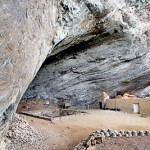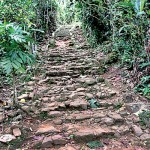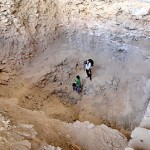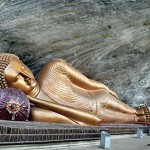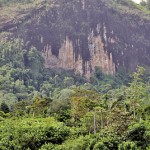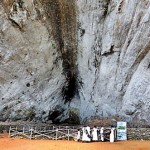Fa-Hien Lena
View(s):Fa-Hien Lena (Cave) or Pahiyangala as it is also known, is a prehistoric cave associated with the Chinese priest Fa-Hien who is believed to have stayed there in the 5th century AD. The cave is located in the Kalutara district. It is situated about 400 metres above sea level. It is about 150 feet in height and 175 feet in breadth and the depth is 280 feet. This is the biggest natural cave identified in Sri Lanka. It was first investigated by the Department of Archaeology in 1968.
Fa-Hien Lena was excavated in two locations in 1986. In addition to stone tools made of quartz and chert, these deposits produced human skeletal remains from the earliest layer onwards.
- At the cave
- Approach to the cave
- 1986 excavation site
- Buddha statue in the Viharaya
- View from the road
The cave is legendary for being the home of Late Pleistocene human fossilised skeletal remains, which were discovered in the cave’s sediments during excavations in the 1960s and the 1980s.
An international team of scientists, from Germany, Australia and Sri Lanka, studied bone tools and artefacts that were recovered during the 2009 to 2012 excavations of Fa-Hien Lena.
The study provides the earliest evidence for
bow-and-arrow use, and perhaps the making of clothes, outside of Africa, dating back around
45,000 to 48,000 years ago.
Fa-Hien Lena is the most important prehistoric cave to have been excavated in Sri Lanka.
Sources : Sri Lanka Department of Archaeology & Science Advances
Pix by M. A. Pushpa Kumara



